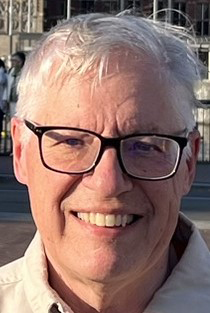How Did Montrose Get Its Name? – Part 2
In my last guest column, I explained how I had unanswered questions about the naming of Montrose. I wrote about the contest that the developers held to name their new community. Thousands of suggestions were submitted and nine people submitted the name Montrose, which the five judges selected as the “winning name,” but the ad placed in the newspaper did not explain why the name was chosen.
Nevertheless, in 1938 local historian Grace J. Oberbeck wrote in her book “History of La Crescenta-La Cañada Valleys” that the name Montrose was selected by the “sub-dividers” as “the most appropriate.”
She did not explain why Montrose was most appropriate, nor did the ad announcing the name say it was “most appropriate,” but Ms. Oberbeck did present three theories that she had heard from locals as to why the name Montrose was submitted and why it was chosen by the judges. She was clear in her writing that these were theories and not actual history, but that has not prevented other local historians (including me) from quoting these as the reasons for Montrose getting its name.
Her three theories are: (1) it’s named after Montrose, Pennsylvania; (2) People here love roses; (3) People loved a then 90-year-old book “The Legend of Montrose” by Sir Walter Scott. In going through these, I knew these were very unlikely sources for the name and I had to send my Montrose book to the publishers without an answer, which has bothered me for years.
Recently I read “Thunderstruck” by Erik Larson, which tells the true story of Dr. Hawley Harvey Crippen who was accused of the gruesome murder of his wife. He managed to escape from England on a ship named the S.S. Montrose. Scotland Yard used Marconi’s new invention of wireless telegraphy to find out if Crippen was on a ship. The detective then chased after the S.S. Montrose across the Atlantic with newspapers around the world covering this incredible pursuit. This happened in 1910, less than two years before our contest, and the story was front page news in all of the LA papers. I wondered if this had anything to do with the name Montrose being submitted?
I had used Google 12 years ago as part of my research but this year Microsoft added CoPilot to Edge. I sent this seven-word prompt to Copilot: “What was the S.S. Montrose named for?” The answer amazed me, mainly because it immediately zeroed in on the correct ship (it mentioned how it was part of the Crippen chase) and it responded, “While the origin of the ship’s name isn’t explicitly documented, it is likely that the ship was named after the town of Montrose in Scotland.”
Twelve years ago, I was aware of the possible Montrose, Scotland connection, but I had no evidence to connect the dots. Encouraged by this, I asked CoPilot how Montrose, California got its name. Grace Oberbeck’s three theories (with me as a source!) are in the response – but at least they were presented as possibilities, not a definitive answer. So I asked CoPilot, “What are towns named Montrose named after?” and CoPilot responded that most are named after Montrose, Scotland. I felt no closer than I was when I submitted the book.
But then I looked at the ad announcing the contest results. The names of the submitters and the judges were all there. So I used CoPilot to find the heritage of these last names. I was astounded to find that of the nine submitters, seven were of Scottish or British heritage. And of the five judges, all five were of Scottish or British heritage!
So the answer to this mystery was clear. The naming contest was rigged! Well, not exactly – but obviously our Montrose was named after Montrose, Scotland. I don’t know this with 100% certainty since Walton didn’t put it in writing but this is as close as we’re going to come to a definitive conclusion.
The irony of this is that when people search for this information in the future this column will come up as the answer, finally replacing Grace Oberbeck’s theories.
Let’s all celebrate with some haggis!

Robert Newcombe is the author of “Montrose” in the Images of America series of Arcadia books as well as is the co-author (with Mike Lawler) of “La Crescenta” and ” La Crescenta: Then and Now.” You can reach him at r_newcombe@yahoo.com or stop him early in the morning on his daily walk through Montrose.
